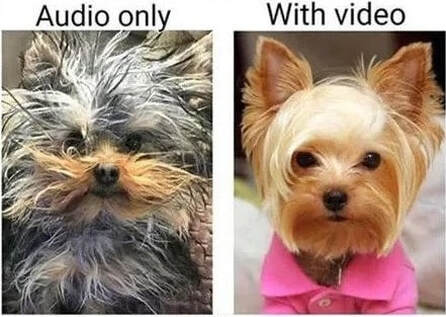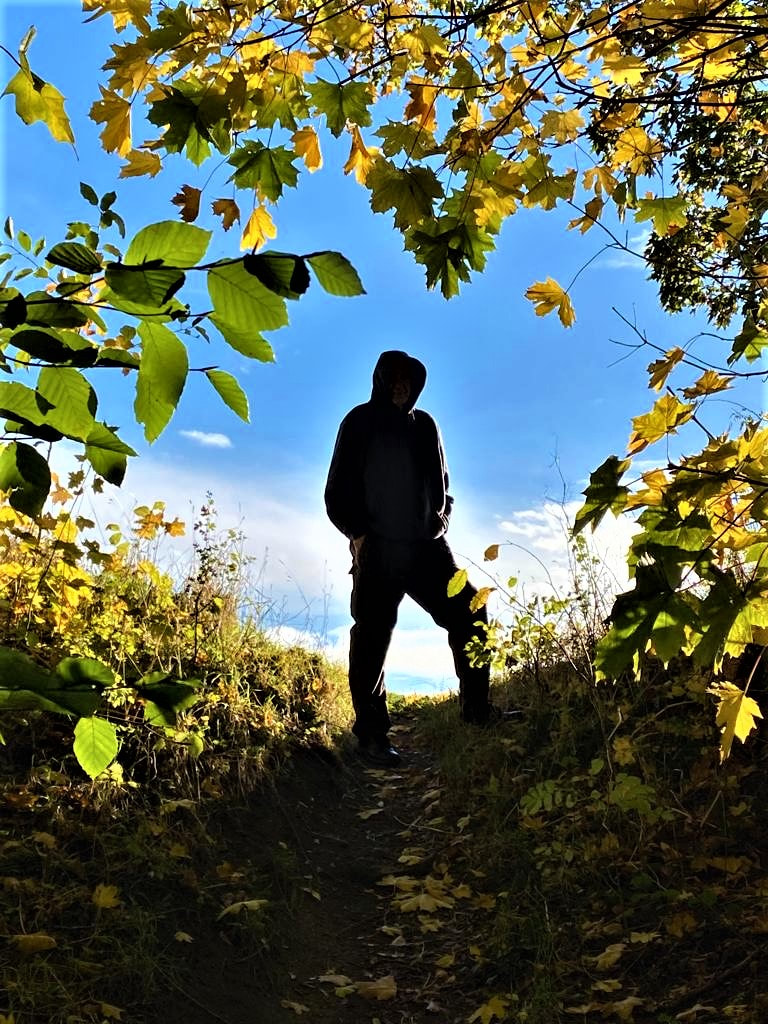|
‘Behind every problem, there is a question trying to ask itself. Behind every question, there is an answer trying to reveal itself.’ (Michael Beckwith) Second-guessing. It creates all sorts of risks. ‘What time does Paul’s meeting finish?’ Is that a simple request for information, or is there a question behind the question? ‘I’d like to meet with Paul this afternoon. What time will he be free?’ That’s better. ‘I need you to present an urgent strategy update to the Board.’ Again, is that a simple instruction, or is there an issue that lays behind it? ‘I’d like to demonstrate to the Board next week that our investments are achieving the desired results.’ Better. A problem with a question that fails to reveal the question, the issue, that lays behind the question is that it leaves the other party to fill in the gaps. In doing so, they are likely to draw on their own assumptions – which could be very different to your own – or sometimes their anxieties. ‘Is he complaining that Paul’s meeting is over-running?’ ‘Is she inferring there’s a problem with my work on strategy delivery that I hadn’t been aware of?’ Simply stating our intention can make all the difference.
10 Comments
‘Sometimes a language does exactly what we think it should; sometimes it goes places we don't like and thrives there in spite of all our worrying.’ (Kory Stamper) I taught English recently at a Montessori school in Germany. I was struck by the amazing level of conversational English of some of the students, and asked how it was possible that they could understand and speak so confidently and fluently at such a young age. Almost all replied that they have learned spoken English via online computer games, where they interact informally and socially with other young people from all over the world. English, for them, isn’t just another foreign language. It’s a form of linguistic currency that enables international communication, relationships, learning and fun. I find myself wondering what the impact will be over, say, 30 years of so many young people 'rubbing shoulders' with international English in this way. I won’t be around then to know the answer to the question, but I suspect that German, currently with 16 different ways to say, for instance, the English word ‘the’, will become simplified in common usage, so that speakers will start to use just one form of definite article in their own language too. We may also see conventions in other increasingly-international languages, such as Mandarin Chinese, influencing how other languages are used. What do you think? ‘I know you believe you understand what you think I said but I'm not sure you realize that what you heard is not what I meant.’ (Alan Greenspan) Clarity. Simple in principle, not always easy in practice. Paradoxically, a significant challenge to communication is human language. Words intended to build a bridge can so easily create a barrier. We may use the same words but mean something different things by them or use different words to mean the same thing – and very often without realising it. Linguists explain that words are connotative as well as denotive. This implies that their meaning, the associations they hold and the feelings they may evoke can shift markedly depending on context, culture, tone and relationship. We may say something in irony. We may tell a joke with a straight face. We may make a harsh-sounding comment with a glint in our eye. We may make subtle gestures that fill in the gaps in verbal conversation. According to Transactional Analysis, we may make a statement at one level with an intention and implied meaning that’s completely different to the literal. These nuances challenge the limits of neuroscience and artificial intelligence. As social construction expert Kenneth Gergen asserts, ‘Neurobiology can tell us a lot about a blink, but nothing about a wink.’ I facilitated an astute cross-cultural group of women last week who practised skills of curiosity and inquiry. Instead of responding immediately to what they thought another person had said or meant – for example, by a statement, phrase or word – they would test their own assumptions by actively exploring that person’s intended message and meaning. It created a dynamic of interpretation based on dialogue, in contrast to an instinctive reaction to words at face value. It took time, patience, and a commitment to hear and understand. Conversations became richer and relationships grew deeper. It's trickier in online conversations. We can find ourselves subconsciously searching hard for non-verbal cues we would ordinarily pick up when together in the same physical room – yet all we can see is head and shoulders in a 2-dimensional screen frame. This is one of the probable contributors to Zoom fatigue. If you have seen the film ‘Thirteen Days’ (2000) based on the Cuban missile crisis, it’s an extreme opposite example of trying to decode hidden messages and intentions based purely only observation of another party’s actions. It’s Chris Argyris’ Ladder of Inference on steroids. What approaches, tools and techniques do you use to ensure clear communication? (See also: Crossed Wires) 'Management speak is the strangling of language. It is the wringing out of any meaning from once-beautiful words.' (Chris Huet) Research published this week by the UK communications firm, Enreach suggests that, in the UK, management-speak still annoys and irritates. Expressions such as: blue sky thinking; thinking outside the box; low hanging fruit; and touching base appear to provoke particular disdain. Yet what is it about these phrases that triggers such strong and cynical reactions? Duncan Ward, author of the survey, proposes two principal reasons: that jargon conveys inauthenticity by presenting: (a) a smokescreen – an attempt to hide shortcomings; or (b) a façade – an attempt to impress others. Ward also reflects that, given that many people are now not working face-to-face partly owing to the residual effects of Covid restrictions, clear communication is considered as essential. My sense is that, in an egalitarian social media era where soundbites and short-sharp messaging are the norm, people are also impatient of any language that comes across as pretentious or waffly. Against this backdrop, management jargon is disliked at work because it creates a fog factor: clouding rather than clearing. It blocks – rather than builds – relationship, meaning and trust. Viewed through a cross-cultural lens, the UK sometimes looks down on language it perceives as imported. It likes to see itself as culturally sophisticated; using simple, clean language. Management-speak is perceived as originating in the United States and with that, for some people, it carries an underlying (and, I hasten to add, unfair) judgement of superficiality. This is one possible reason why I believe Scott Adams' satirical Dilbert was so popular in the UK. We were able to smile at a phenomenon ‘over there’, whilst also to recognise its growing influence ‘over here’. Ward added that most respondents use jargon, in spite of disapproving of it. I can add my own name to that list of offenders. I worked with Peter Robson, a great leader who came from a very different background. At my first appraisal, he said, ‘When you speak in OD language, I have absolutely no idea what you’re talking about.’ He also added, in generous spirit, ‘Yet I have seen and felt the impact of what you do. It’s like magic. Whatever it is – keep doing it!’ Ward concludes simply that: ‘people would prefer to understand more clearly what their colleagues mean.’ What jargon phrases do you find yourself using? Which wind you up most – and why? ‘It’s always best to pose a question, except when it isn’t.’ (Claire Pedrick) It reminds me of Ted Winship, a trade union activist I worked with as an apprentice. He often spoke like this: ‘It’s always the same, sometimes.’ It was a kind of word play that made people stop – and think. Or a teacher at school whose name, sadly, escapes me now: ‘If you have nothing to say, say it.’ It was some years before I finally worked out what she meant. I think too of Jesus. He often spoke in parables – stories, analogies, that left many of those who heard him feeling perplexed or bemused. Yet, why do it? In an era of endless soundbites, personal broadcasts, voices calling out loudly in all directions competing for air space, it’s hard to achieve cut-through. Even harder, perhaps, to achieve break-through; to have a meaningful influence or impact. We create and consume words like candy and in high volume, yet few provide the life-giving spiritual, mental and emotional sustenance we need to learn, develop and grow. How do you use language to evoke or provoke, reveal or inspire? ‘Words can inspire. Words can destroy. Choose your words well.’ (Peter Economy) In English, we use an expression, ‘biting my lip’ to describe a moment when we’re yearning to say something, yet choose self-restraint. And there can be good reasons to hold back. Our words could prove hurtful or damaging…or decidedly career-limiting. Yet there are situations in which we should speak up. What if our safety filters auto-override our personal need for congruence; or the needs of a situation where our silence could be taken as tacit agreement or collusion? What if our fears of the consequences of speaking out, for instance against some grievous injustice, allow the violation to go unchecked? What if we’re simply too shy or polite to speak out for risk of transgressing our own or others’ cultural expectations? Anti-Nazi Martin Niemöller’s words can still haunt us: ‘First they came for X, and I did not speak out because I was not an X’. It’s a silence that can leave our consciences seared and others devoid of support. Yet we also know the amazing, positive, transformative power of words to spark the imagination, ignite a passion, set us brightly ablaze. Think of first-class orators, of Winston Churchill or Martin Luther King: of words that inspired such great conviction, commitment and courage. Words can reframe, reconstrue, change everything we think and believe is possible. Words can touch us deeply emotionally; instil confidence, engender hope, enable us to receive and convey love. As a follower of Jesus, I love the mystery of words: ‘In the beginning was the Word, the early word, the first word, the I am who I am word, the with-God word, the was-God word. The without-whom-nothing word, an unheard-of word behind words. World-making word. Speaking the language behind language.’ Words used playfully, creatively, evocatively, provocatively can allow us to grasp and express reality, idea, concept, abstract and experience that lay beyond words. At times, I have spoken words when I should have stayed silent and stayed silent when I should have spoken. It has felt like dancing on a knife edge; trying to weigh up pros and cons, rights and wrongs, implications and consequences, all in a split second. Sometimes, I have found myself lost for words, or I have used words clumsily or harshly without enough care for others. In seeking too hard to be more considered or diplomatic, my words have felt too weak, cautious or ineffective. At other times, however, I have seen and felt the dazzling, dynamic influence that life-giving words can have on a person’s whole world, outlook and stance; a team’s relationships; an organisation’s effectiveness; a society’s vision and hope. I have seen how words can change…everything. I try to use words with courage, humility, creativity and love. What part do words play in your life, work and relationships? If we use words well, what becomes possible? How are you finding online leadership, OD, coaching and training? What are the pros and cons and how are you making it work? Pav Ponnoosami blogged satirically this week that, during the lockdown, ‘The bedroom has become the boardroom’. As we find ourselves staring at each other on screen, we often see a backdrop, a glimpse of a person’s home life, an insight into the person-beyond-the-role. I find myself intrigued by the different things I see-hear that lay behind: books on the shelf; flowers on the desk; photos on the wall; a child that stumbles in unexpectedly, asking for attention. They all add context, meaning. Yet is an online relationship a real relationship? I’ve certainly never spent so much time with clients and colleagues on Zoom as I have done during this past few weeks. Is it real? The question itself begs at least two underlying questions: what constitutes an authentic relationship, and what do we mean by real? We could of course apply the same two questions to evaluate encounters and interactions between people in the real world; that is, the world that we think of as real, not just the virtual one. So, some thoughts. Can an online conversation allow us to know and understand each other better? Yes, although I will know someone better if I see and experience them acting-interacting in a range of different situations and relationships. Can it enable effective task communication? Yes, if both-all parties have access to suitable and stable technologies. Can it enable practical teamwork to achieve a common purpose? Yes, if all have equal access. Can it build friendship or love? What do you think? "Ignore me. I’m just having a bitch-moan-whine moment.” That made me laugh. I had never heard that expression before and thought, what a great way to signpost self-awareness and intention. So many conversations end up strained and, as a consequence, relationships lay in tatters because the underlying values, motivation and thought processes are assumed but left unexpressed. Work cross-culturally – whether that be in different counties or even with people from different personal and professional backgrounds or sectors – and you will almost certainly know what I mean.
It’s where we sometimes talk about crossed wires or, in Transactional Analysis (TA) terms, crossed transactions. I may say something tongue-in-cheek and you may take it as a serious comment. You may say something neutrally as an observation and I hear it as implied criticism. In other words, we infer things, particularly meaning and intention, based on where we are at personally or culturally in the moment, rather than necessarily on what the other person meant or intended us to hear or feel. This is an area where learning to signpost explicitly can make a very positive difference. To signpost well involves being aware-in-the-moment, authentic in what we disclose, skilful in how we communicate and curious about the other. Aware: tune into what we believe, think and feel – here-and-now. Authentic: be honest and truthful – speak with congruence and integrity. Skilful: use language, signs and symbols that bridge or transcend personal, professional and cultural boundaries – sensitive to the person, context and relationship. Curious: check with the other what they saw, heard and felt – whether they know and understand what lay behind your actions and words. Picture this. Early morning. Hotel. Looking forward to a good cup of tea - for which read lots of good cups of tea. I mean, I had slept (for which read I hadn’t slept) on a hotel bed that night and was feeling sleepy, in real need of a caffeine fix. So the waitress offers me a small pot of tea. You know, one of those things that’s so small that it barely fills one cup. Politely, I ask for a large pot instead.
The waitress appears. Large pot of tea. I feel a sense of excitement. Excellent. She leaves the pot on the table and I lift it to pour. Oh…feels unexpectedly light. :/ Weird. Lift the lid and look inside. Tiny amount of hot water, enough to fill one cup, with 4 tea bags floating in it. Strong as treacle. So I call her back. Ask her to fill the pot to the top with hot water. Wait again in hopeful anticipation. Waitress reappears with the large pot in hand. Puts it on the table and walks away. It’s heavy this time. Yes. Excitement. Lift the lid just to check. Pot full of clear, hot water, no tea bags. Aaargh. Call the waitress back. ‘Could I have 3 tea bags please?’ Waitress looks bemused, that make-your-mind-up look. Comes back with 3 tea bags. Tries to take the pot away. I grab it with both hands… What was going on here? Peter Cotterell, comms guru, calls this being in different ‘presuppositional pools’. I had an idea in mind, what I wanted, and assumed the waitress would get that without my explaining it. She, on the other hand, had a very different idea of what I meant. We were in very different pools without even realising it. So, what was your best-worst communication gaff? When teams are under pressure, e.g. dealing with critical issues, sensitive topics or working to tight deadlines, tensions can emerge that lead to conversations getting stuck. Stuck-ness between two or more people most commonly occurs when at least one party’s underlying needs are not being met, or a goal that is important to them feels blocked.
The most obvious signs or stuck-ness are conversations that feel deadlocked, ping-pong back and forth without making progress or go round and round in circles. Both parties may state and restate their views or positions, wishing the other would really hear. If unresolved, responses may include anger/frustration (fight) or disengagement/withdrawal (flight). If such situations occur, a simple four step process can make a positive difference, releasing the stuck-ness to move things forward. It can feel hard to do in practice, however, if caught up in the drama and the tense feelings that ensue! I’ve found that jotting down questions as an aide memoire can help, especially if stuck-ness is a repeating pattern. 1. Observation. (‘What’s going on?’). This stage involves metaphorically (or literally) stepping back from the interaction to notice and comment non-judgementally on what’s happening. E.g. ‘We’re both stating our positions but seem a bit stuck’. ‘We seem to be talking at cross purposes.’ 2. Awareness. (‘What’s going on for me?’). This stage involves tuning into my own experience, owning and articulating it, without projecting onto the other person. E.g. ‘I feel frustrated’. ‘I’m starting to feel defensive.’ ‘I’m struggling to understand where you are coming from.’ ‘I’m feeling unheard.’ 3. Inquiry. (‘What’s going on for you?’). This stage involves inquiring of the other person in an open spirit, with a genuine, empathetic, desire to hear. E.g. ‘How are you feeling?’ ‘What are you wanting that you are not receiving?’ ‘What’s important to you in this?’ ‘What do you want me to hear?’ 4. Action. ('What will move us forward?’) This stage involves making requests or suggestions that will help move the conversation forward together. E.g. ‘This is where I would like to get to…’ ‘It would help me if you would be willing to…’. ‘What do you need from me?’ ‘How about if we try…’ Shifting the focus of a conversation from content to dynamics in this way can create opportunity to surface different felt priorities, perspectives or experiences that otherwise remain hidden. It can allow a breathing space, an opportunity to re-establish contact with each other. It can build understanding, develop trust and accelerate the process of achieving results. |
Nick WrightI'm a psychological coach, trainer and OD consultant. Curious to discover how can I help you? Get in touch! Like what you read? Simply enter your email address below to receive regular blog updates!
|










 RSS Feed
RSS Feed